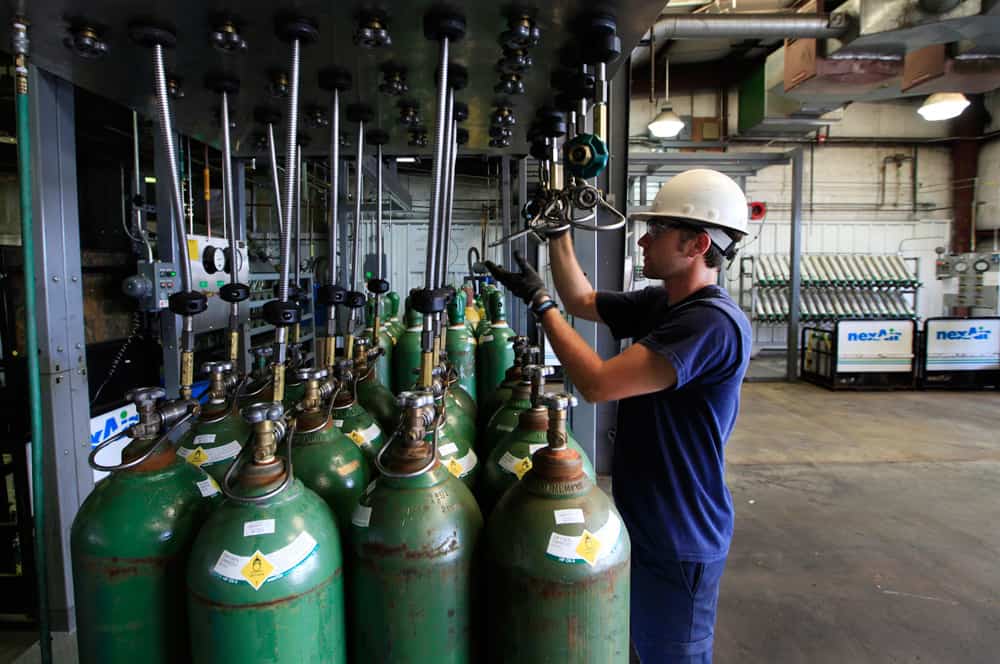nexAir’s Dry Ice for Cold Chain Logistics: Keeping Your Products Safe in Summer Heat
Summer shipping season brings both opportunity and complexity for businesses moving temperature-sensitive products. We’ve watched companies transform their operations by mastering hot weather logistics, expanding into new markets that were previously off-limits due to distance or climate concerns. The key lies in understanding where cold chains typically struggle and building dry ice strategies that turn those vulnerabilities into strengths.
Where Cold Chains Break Down First
Loading docks become pressure points during summer months, especially in facilities without adequate climate control. We recently worked with a food distributor whose afternoon loading operations were pushing product temperatures up before trucks even left the warehouse. We redesigned their dry ice placement to create cooling zones right at the loading point, which eliminated the temperature spikes they’d been fighting.
Cross-docking operations present similar challenges when products sit exposed during sorting and redistribution. The solution isn’t always more dry ice—sometimes it’s strategic placement that creates protective cold air circulation around vulnerable products. Understanding these critical exposure points helps us design protection systems that work when and where they’re needed most.
Designing for High-Heat Realities, Not Best-Case Scenarios
Effective summer logistics planning requires honest assessment of actual shipping conditions rather than optimistic projections. We analyze customer shipping data regularly, and the gap between scheduled transit times and reality often surprises people. A pharmaceutical customer discovered their “overnight” deliveries averaged 28 hours during peak summer volume, requiring completely different dry ice calculations.
This realistic approach opens new possibilities for route optimization and market expansion. When you build adequate thermal protection into your shipping plan, delayed carriers and extended transit times become manageable variables instead of product-threatening emergencies. The upfront investment in proper dry ice protection pays for itself by enabling operational flexibility that creates competitive advantages.
Dry Ice Placement, Load Ratios, and Format Selection
Container design affects dry ice performance more dramatically than most logistics managers realize. We work with customers to conduct thermal mapping studies that reveal how cold air moves through their specific packaging configurations. A seafood company reduced their dry ice usage by 30% simply by repositioning it to create better convection patterns within their insulated containers.
Format selection depends heavily on your operational workflow and product characteristics. Pellets work beautifully for products requiring direct surface contact cooling. Blocks provide longer-lasting protection for extended transit times. Slices offer flexibility for compartmentalized shipments with varying temperature requirements. Matching the right format to your specific application makes all the difference in both effectiveness and cost control.
Monitoring and Adjusting as Conditions Shift
Summer shipping conditions evolve throughout the season, requiring ongoing adjustments to maintain optimal performance. We track customer shipping data and weather patterns to identify when dry ice strategies need modification. Early summer might require standard protection levels, while peak heat periods or volume spikes demand increased thermal capacity.
Real performance data often reveals optimization opportunities that aren’t obvious from theoretical calculations. Some customers discover they can reduce dry ice for certain well-insulated routes while others need increases for paths through extreme climate zones. This continuous refinement process helps achieve the sweet spot between comprehensive product protection and cost efficiency.
Planning with a Partner Who Knows the Territory
Successful summer shipping requires working with suppliers who understand your operational realities and seasonal challenges. We help customers develop comprehensive strategies that consider their carrier relationships, route characteristics, and volume fluctuations throughout the shipping season. This partnership approach ensures dry ice specifications align with actual operational needs rather than generic recommendations.
Our expert KnowHow™ comes from years of helping businesses navigate their most challenging shipping periods. Whether you’re expanding into new geographic markets or managing increased seasonal demand, we provide the technical guidance and supply reliability that help you Forge Forward with confidence during even the most demanding summer logistics operations.
Looking out for your future
Get your career going on the right track with nexAir
Find out how nexAir KnowHow has impacted businesses all over the Southeast
Our expertise makes us more than a valuable partner, it makes us headlines
Don't see what you're looking for?
Everything we offer is a click away and it will arrive before you know it.


